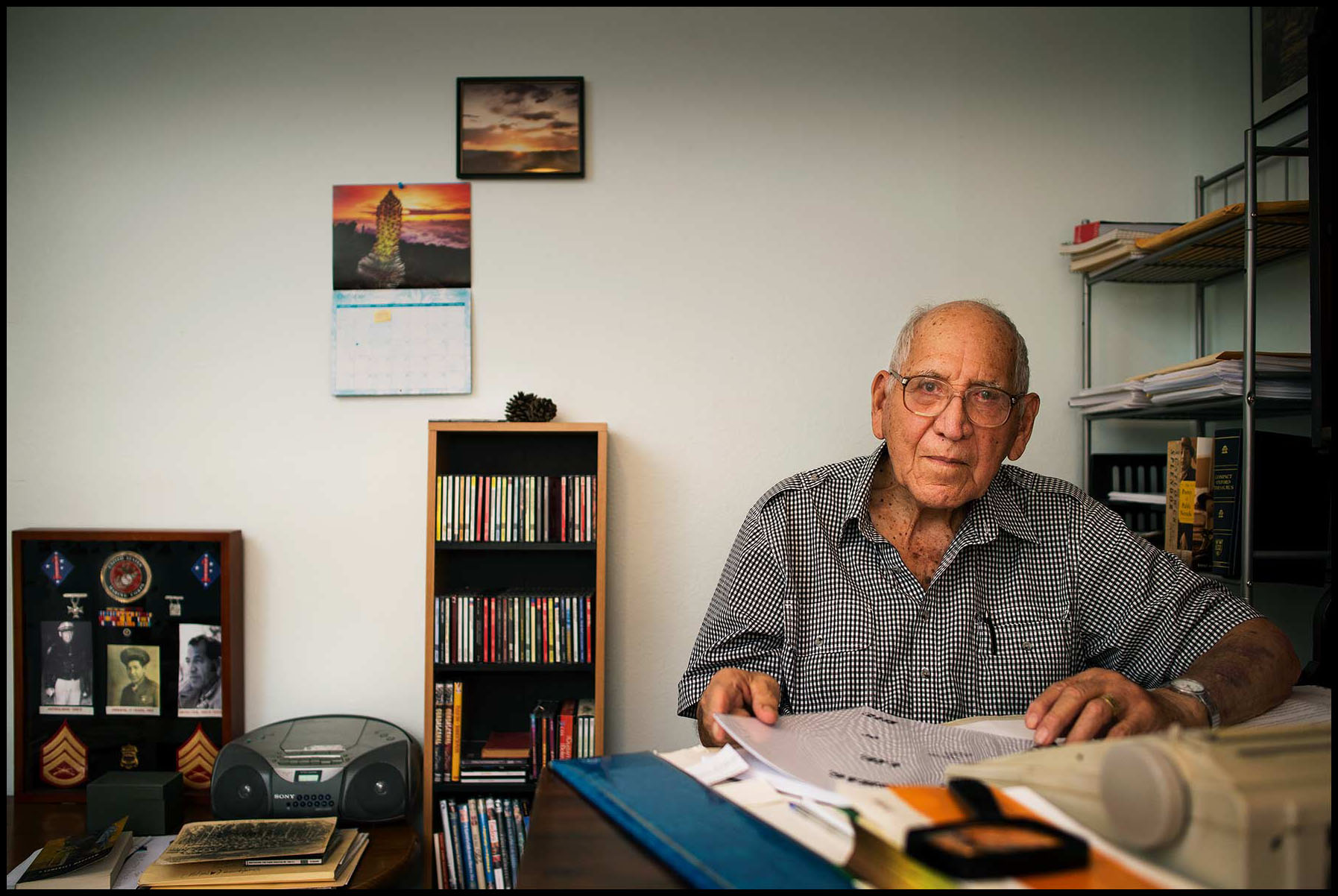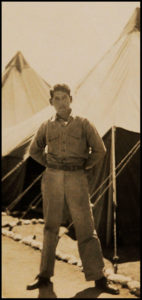
Art Munoz
Guadacanal
Peleliu veteran
Art Munoz
Staff Sergeant, USMC
1942–1946

Cpl. Art Munoz
Australia, 1943
I was in the first wave at Peleliu. I remember very little after hitting the beach other than seeing this Marine with a flamethrower out there. I thought, ‘There goes a hero.’
My parents moved from Los Angeles to Corpus Christi when I was 12 years old. My step-father was told that there was the possibility of work in Corpus at the Naval Air Station.
When I was 16, I got a job as a Western Union telegraph boy. I delivered telegrams to the Federal Building where the Army, Navy, and Marine recruiters were. I would see the Marines in those dress blues; they looked sharp. When the war came, I knew where I was going—the Marines.
On January 2, 1942 I was in boot camp in San Diego, California. I was 17. After boot camp we went to the rifle range at Camp Matthews and then to Twentynine Palms in the desert. We thought we were all going to Africa, but we went the other way. I was sent to communications school. I learned everything about transmitting messages, orders, and reports, both in the field and at sea, and between headquarters and distant installations. From Twentynine Palms, I went to the South Pacific for three months. It started at British Samoa, then to Guadalcanal the first week of September. The 5th Marines had been there since August. In January, 1943 I got malaria and went to Melbourne Australia for nine months.
In late 1943 we went to New Guinea for more training, then the Russell Islands, Cape Gloucester, Palau, got some R&R, then Peleliu. I ran a lot of wire on ships. The radioman carried a huge radio and another man carried a big battery. We called ourselves sniper bait. One time it was getting dark and a Marine yelled out, ‘What’s the password?’ I knew the previous day’s but not that day’s. I was yelling out every password I knew. The Japs couldn’t say ‘R’ and ‘L’, and all the passwords had those letters. They finally let us in.
I was in the first wave at Peleliu. Our Amtrak vehicle got stuck on the coral and we had to bail out. As soon as we jumped out, the track got hit. The coral would cut you deep and it was all we could do to get to the beach. I was a telephone man with all that gear as well as my combat gear. I remember very little after hitting the beach other than seeing this Marine with a flamethrower out there. I thought, ‘There goes a hero.’
When the war ended, I was in the Naval Hospital in San Francisco. You could hear the crowd outside celebrating and the ship horns and cars. Market Street was a happy place and there I was, running a fever with a relapse of malaria.
I came back to Texas. I wanted to go to college, but I had quit school in the 10th grade. I enrolled in night school; it was all service guys that had to get a GED to get into college. I had joined the Marine Reserves which met once a month at the arsenal in San Antonio. We had a ball, but we had to put in the time to get our check. We were all called back for the Korean War, but I was lucky. I spent the whole time at Camp Pendleton, California as an instructor. After Korea, I gave up on college. I wanted a car and stuff. I came to San Antonio and tried the police. I liked police work—lot of Marines in there. I was a policeman for 22 years, retired in 1975, then worked for the State for 10 years.
I miss my Marine Corps service. I miss that time in my life—the camaraderie and friendship. I think about that all the time. There were a lot of good days and a lot of sad days. My worst day was landing at Peleliu. I’m absolutely proud of my WWII service and the Marines. I have three Battle Stars: Cape Gloucester, Guadalcanal and Peleliu. {10-29-2015 • San Antonio, TX}